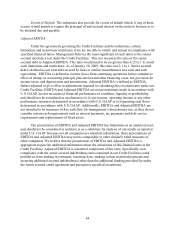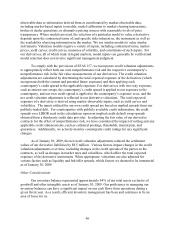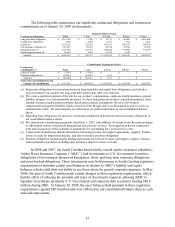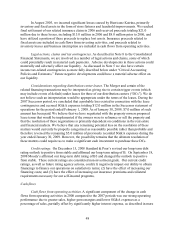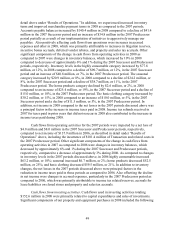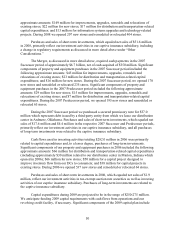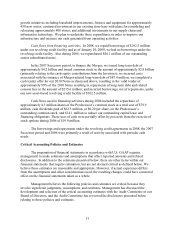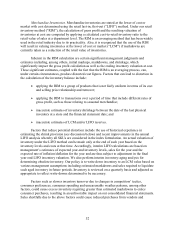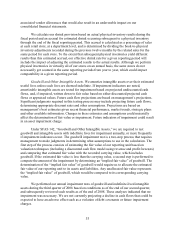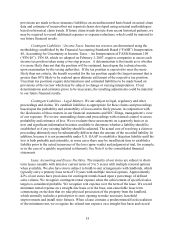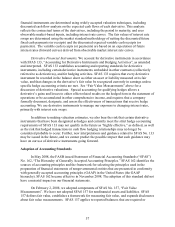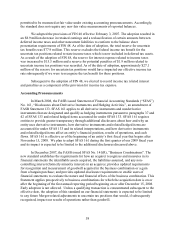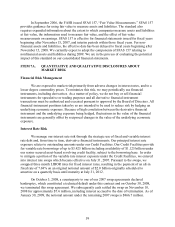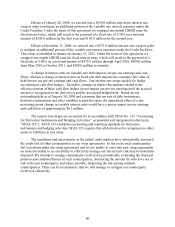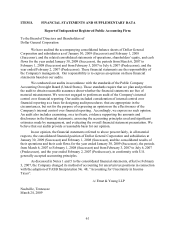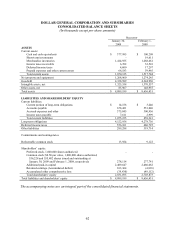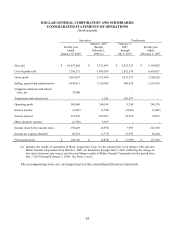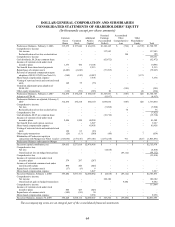Dollar General 2008 Annual Report Download - page 56
Download and view the complete annual report
Please find page 56 of the 2008 Dollar General annual report below. You can navigate through the pages in the report by either clicking on the pages listed below, or by using the keyword search tool below to find specific information within the annual report.54
Purchase Accounting. The Merger was accounted for as a reverse acquisition in
accordance with the purchase accounting provisions of SFAS 141, “Business Combinations,”
under which our assets and liabilities have been accounted for at their estimated fair values as of
the date of the Merger. The aggregate purchase price was allocated to the tangible and intangible
assets acquired and liabilities assumed, based upon an assessment of their relative fair values as
of the date of the Merger. These estimates of fair values, the allocation of the purchase price and
other factors related to the accounting for the Merger are subject to significant judgments and the
use of estimates.
Property and Equipment. Property and equipment are recorded at cost. We group our
assets into relatively homogeneous classes and generally provide for depreciation on a straight-
line basis over the estimated average useful life of each asset class, except for leasehold
improvements, which are amortized over the lesser of the applicable lease term or the estimated
useful life of the asset. Certain store and warehouse fixtures, when fully depreciated, are
removed from the cost and related accumulated depreciation and amortization accounts. The
valuation and classification of these assets and the assignment of useful depreciable lives
involves significant judgments and the use of estimates.
Impairment of Long-lived Assets. We review the carrying value of all long-lived assets
for impairment at least annually, and whenever events or changes in circumstances indicate that
the carrying value of an asset may not be recoverable. In accordance with SFAS 144,
“Accounting for the Impairment or Disposal of Long-Lived Assets,” we review for impairment
stores open for approximately two years or more for which recent cash flows from operations are
negative. Impairment results when the carrying value of the assets exceeds the estimated
undiscounted future cash flows over the life of the lease. Our estimate of undiscounted future
cash flows over the lease term is based upon historical operations of the stores and estimates of
future store profitability which encompasses many factors that are subject to variability and are
difficult to predict. If a long-lived asset is found to be impaired, the amount recognized for
impairment is equal to the difference between the carrying value and the asset’ s estimated fair
value. The fair value is estimated based primarily upon future cash flows (discounted at our
credit adjusted risk-free rate) or other reasonable estimates of fair market value in accordance
with U.S. GAAP.
We recorded impairment charges included in SG&A expense of approximately $4.0
million in 2008, $0.2 million in the 2007 Predecessor period and $9.4 million in 2006 to reduce
the carrying value of certain of our stores’ assets as deemed necessary based on our evaluation
that such amounts would not be recoverable, primarily due to insufficient sales or excessive costs
resulting in negative current and projected future cash flows at these locations. Such assets, to
the extent still functional, are held for use in other store locations. The majority of the 2006
charges were recorded pursuant to certain strategic initiatives discussed above.
Insurance Liabilities. We retain a significant portion of the risk for our workers’
compensation, employee health insurance, general liability, property loss and automobile
coverage. These costs are significant primarily due to the large employee base and number of
stores. At the date of the Merger the liability for workers’ compensation and general liability was
discounted in accordance with purchase accounting standards. Subsequent to the Merger,


